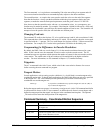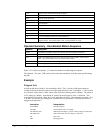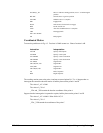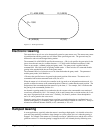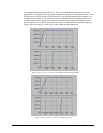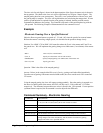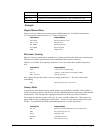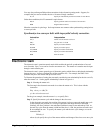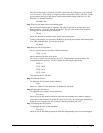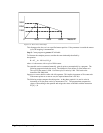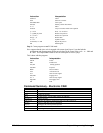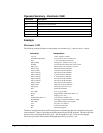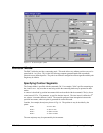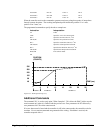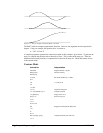
DMC-2X00 Chapter 6 Programming Motion y 51
The cycle of the master is limited to 8,388,607 whereas the slave change per cycle is limited
to 2,147,483,647. If the change is a negative number, the absolute value is specified. For the
given example, the cycle of the master is 6000 counts and the change in the slave is 1500.
Therefore, we use the instruction:
EM 6000,1500
Step 3. Specify the master interval and starting point.
Next we need to construct the ECAM table. The table is specified at uniform intervals of
master positions. Up to 256 intervals are allowed. The size of the master interval and the
starting point are specified by the instruction:
EP m,n
where m is the interval width in counts, and n is the starting point.
For the given example, we can specify the table by specifying the position at the master points
of 0, 2000, 4000 and 6000. We can specify that by
EP 2000,0
Step 4. Specify the slave positions.
Next, we specify the slave positions with the instruction
ET[n]= a,b,c,d
where n indicates the order of the point.
The value, n, starts at zero and may go up to 256. The parameters A,B,C,D indicate the
corresponding slave position. For this example, the table may be specified by
ET[0]=,0
ET[1]=,3000
ET[2]=,2250
ET[3]=,1500
This specifies the ECAM table.
Step 5. Enable the ECAM
To enable the ECAM mode, use the command
EB n
where n=1 enables ECAM mode and n=0 disables ECAM mode.
Step 6. Engage the slave motion
To engage the slave motion, use the instruction
EG a,b,c,d
where a,b,c,d are the master positions at which the corresponding slaves must be engaged.
If the value of any parameter is outside the range of one cycle, the cam engages immediately.
When the cam is engaged, the slave position is redefined, modulo one cycle.
Step 7. Disengage the slave motion
To disengage the cam, use the command
EQ a,b,c,d
where a,b,c,d are the master positions at which the corresponding slave axes are disengaged.



